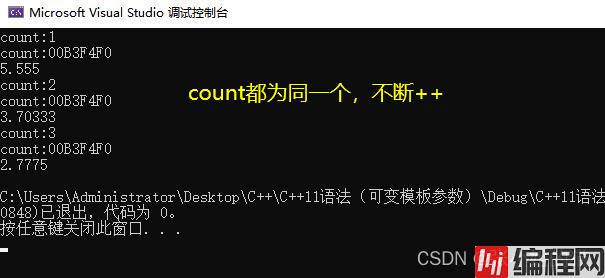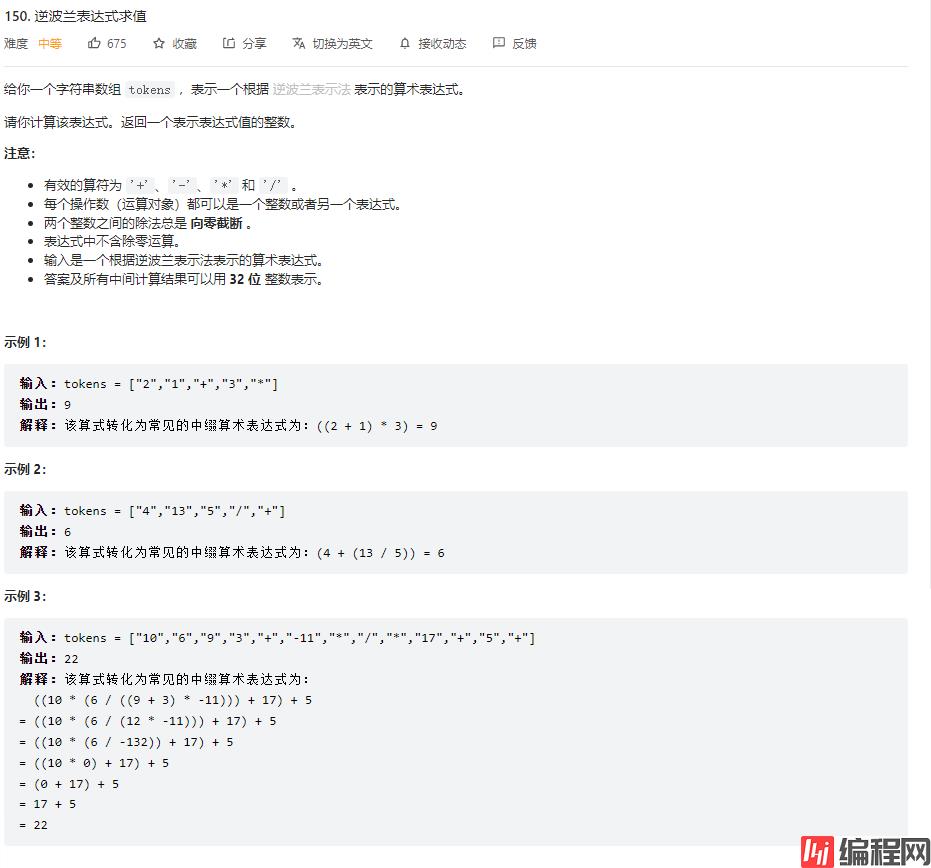目录概念类型统一例题:求解逆波兰表达式包装器的意义bind 包装器bind 绑定固定参数调整传参顺序bind包装器的意义概念 function包装器 也叫作适配器。c++中的func
function包装器 也叫作适配器。c++中的function本质是一个类模板,也是一个包装器。
那么我们来看看,我们为什么需要function呢?
包装器定义式:
// 类模板原型如下
template <class T> function; // undefined
template <class Ret, class... Args>
class function<Ret(Args...)>;
模板参数说明:
function包装器可以对可调用对象进行包装,包括函数指针、函数名、仿函数(函数对象)、lambda表达式
int f(int a, int b)
{
return a + b;
}
struct Functor
{
public:
int operator() (int a, int b)
{
return a + b;
}
};
class Plus
{
public:
//静态 vs 非静态
static int plusi(int a, int b)
{
return a + b;
}
double plusd(double a, double b)
{
return a + b;
}
};
int main()
{
function<int(int, int)> f1 = f;
f1(1, 2);
function<int(int, int)> f2 = Functor();
f2(1, 2);
function<int(int, int)> f3 = Plus::plusi;
f3(1, 2);
//非静态成员函数 要 + 对象
function<double(Plus, double, double)> f4 = &Plus::plusd;
f4(Plus(), 1.1, 2.2);
return 0;
}
注意事项:
取静态成员函数的地址可以不用取地址运算符“&”,但取非静态成员函数的地址必须使用取地址运算符“&”
非静态成员函数在调用的时候要 + 对象,因为非静态成员函数的第一个参数是隐藏this指针,所以在包装时需要指明第一个形参的类型为类的类型。
对于以下函数模板useF:
代码如下:
template<class F, class T>
T useF(F f, T x)
{
static int count = 0;
cout << "count:" << ++count << endl;
cout << "count:" << &count << endl;
return f(x);
}
在不使用包装器,直接传入对象的时候,会实例化出三份
double f(double i)
{
return i / 2;
}
struct Functor
{
double operator()(double d)
{
return d / 3;
}
};
int main()
{
//函数指针
cout << useF(f, 11.11) << endl;
//仿函数
cout << useF(Functor(), 11.11) << endl;
//lambda表达式
cout << useF([](double d)->double{return d / 4; }, 11.11) << endl;
return 0;
}
输出结果如下:

由于函数指针、仿函数、lambda表达式是不同的类型,因此useF函数会被实例化出三份,三次调用useF函数所打印count的地址也是不同的。
包装后代码如下:
int main()
{
// 函数指针
function<double(double)> f1 = f;
cout << useF(f1, 11.11) << endl;
// 函数对象
function<double(double)> f2 = Functor();
cout << useF(f2, 11.11) << endl;
// lamber表达式
function<double(double)> f3 = [](double d)->double { return d / 4; };
cout << useF(f3, 11.11) << endl;
return 0;
}

题目:

解题思路:
此处的包装器:
class Solution {
public:
int evalRPN(vector<string>& tokens) {
stack<long long> st;
map<string, function<long long(long long, long long)>> opfuncMap =
{
//自动构造pair ~ 初始化列表构造
{"+", [](long long a , long long b){return a + b;}},
{"-", [](long long a , long long b){return a - b;}},
{"*", [](long long a , long long b){return a * b;}},
{"/", [](long long a , long long b){return a / b;}},
};
for(auto& str : tokens)
{
if(opfuncMap.count(str))
{
//操作符 :出栈(先出右,再出左)
long long right = st.top();
st.pop();
long long left = st.top();
st.pop();
st.push(opfuncMap[str](left, right));
}
else
{
//操作数:入栈
st.push(stoll(str));
}
}
return st.top();
}
};
将可调用对象的类型进行统一,便于我们对其进行统一化管理。
包装后明确了可调用对象的返回值和形参类型,更加方便使用者使用。
bind 是一种函数包装器,也叫做适配器。它可以接受一个可调用对象,生成一个新的可调用对象来“适应”原对象的参数列表,C++ 中的 bind 本质还是一个函数模板
bind函数模板的原型如下:
template <class Fn, class... Args>
bind(Fn&& fn, Args&&... args);
template <class Ret, class Fn, class... Args>
bind(Fn&& fn, Args&&... args);
模板参数说明:
调用bind的一般形式
auto newCallable = bind(callable, arg_list);
callable:需要包装的可调用对象
newCallable:生成的新的可调用对象
arg_list:逗号分隔的参数列表,对应给定的 callable 的参数,当调用 newCallable时,newCallable 会调用 callable,并传给它 arg_list 中的参数
_1 _2 ... 是定义在placeholders命名空间中,代表绑定函数对象的形参;_1代表第一个形参,_2代表第二个形参 …
举例:
using namespace placeholders;
int x = 2, y = 10;
Div(x, y);
auto bindFun1 = bind(Div, _1, _2);
原本传入的参数要求是要3个,现在只需要输入两个参数,因为绑定了固定的函数对象
using namespace placeholders;
class Sub
{
public:
int sub(int a, int b)
{
return a - b;
}
};
int main()
{
//function<int(Sub, int, int)> fsub = &Sub::sub;
function<int(int, int)> fsub = bind(&Sub::sub, Sub(), _1, _2);
}
想把Mul函数的第三个参数固定绑定为1.5,可以在绑定时将参数列表的placeholders::_3设置为1.5。比如:
int Mul(int a, int b, int rate)
{
return a * b * rate;
}
int main()
{
function<int(int, int)> fmul = bind(Mul, _1, _2, 1.5);
}
对于 Sub 类中的 sub 函数,因为 sub 的第一个参数是隐藏的 this 指针,如果想要在调用 sub 时不用对象进行调用,那么可以将 sub 的第一个参数固定绑定为一个 Sub 对象:
using namespace placeholders;
class Sub
{
public:
int sub(int a, int b)
{
return a - b;
}
};
int main()
{
//绑定固定参数
function<int(int, int)> func = bind(&Sub::sub, Sub(), _1, _2);
cout << func(1, 2) << endl;
return 0;
}
此时调用对象时就只需要传入用于相减的两个参数,因为在调用时会固定帮我们传入一个匿名对象给 this 指针。
如果想要将 sub 的两个参数顺序交换,那么直接在绑定时将 _1 和_2 的位置交换一下就行了:
using namespace placeholders;
class Sub
{
public:
int sub(int a, int b)
{
return a - b;
}
};
int main()
{
//绑定固定参数
function<int(int, int)> func = bind(&Sub::sub, Sub(), _2, _1);
cout << func(1, 2) << endl;
return 0;
}其原理:第一个参数会传给_1,第二个参数会传给 _2,因此可以在绑定时通过控制 _n 的位置,来控制第 n 个参数的传递位置
1.将一个函数的某些参数绑定为固定的值,让我们在调用时可以不用传递某些参数。
2.可以对函数参数的顺序进行灵活调整。
--结束END--
本文标题: C++11学习之包装器解析
本文链接: https://lsjlt.com/news/195811.html(转载时请注明来源链接)
有问题或投稿请发送至: 邮箱/279061341@qq.com QQ/279061341
2024-03-01
2024-03-01
2024-02-29
2024-02-29
2024-02-29
2024-02-29
2024-02-29
2024-02-29
2024-02-29
2024-02-29
回答
回答
回答
回答
回答
回答
回答
回答
回答
回答
0